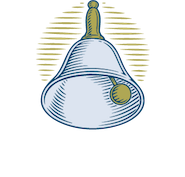Concrete to Abstract
A progression both logical and developmentally appropriate. The child is introduced first to a concrete material that embodies an abstract idea such as size or colour. Given hands-on experience, the child’s mind grasps the idea inherent in the material and forms an abstraction. Only as the child develops, is she gradually able to comprehend the same idea in symbolic form.
Independence
Normal developmental milestones such as weaning, walking, talking, etc. can be seen as a series of events which enable the child to achieve increased individuation, autonomy and self-regulation. Throughout the four planes of development, the child and young adult continuously seek to become more independent. It is as if the child says, Help me to help myself.
Practical Life
One of the four areas (others include Sensorial, Language, Mathematics and Cultural) of the Montessori environment that encompasses skills practical to everyday life.They are purposeful activities that help the children to maintain their environment and make a meaningful contribution while improving control, co-ordinated movement and concentration. For children under the age of 6, this includes care of self (getting dressed, brushing teeth, cooking), care of the environment (watering plants, cleaning) and grace and courtesy (moving gracefully, using manners). For older children, this can include such things as the care of animals, gardening and the meaningful use of technology.
Mixed Ages
One of the hallmarks of the Montessori method is that children of mixed ages work together in the same class. Age groupings are based on developmental planes. Children from 3-6 years of age are together in the Children’s House; 6-9 year olds share the lower elementary and the upper elementary is made up of 9-12 year olds. Because the work is individual, children progress at their own pace; there is cooperation rather than competition between the ages.
Sensorial Materials
The sensorial materials were created to help young children in the process of creating and organising their intelligence. Each scientifically designed material isolates a quality found in the world such as colour, size, shape, etc. and this isolation focuses the attention on this one aspect. The child, through repeated manipulation of these objects, comes to form clear ideas or abstractions. What could not be explained by words, the child learns by experience working with the sensorial materials.
Work
From an evolutionary perspective, the long period of childhood exists so children can learn and experiment in a relatively pressure-free environment. Most social scientists refer to this pressure-free experimentation as play (e.g., see Groos, 1901), although Montessori preferred to call this activity the work of childhood. Children certainly are serious when engaged in the kind of play that meets developmental needs and, given freedom and time, will choose purposeful activities over frivolous make-believe ones.
